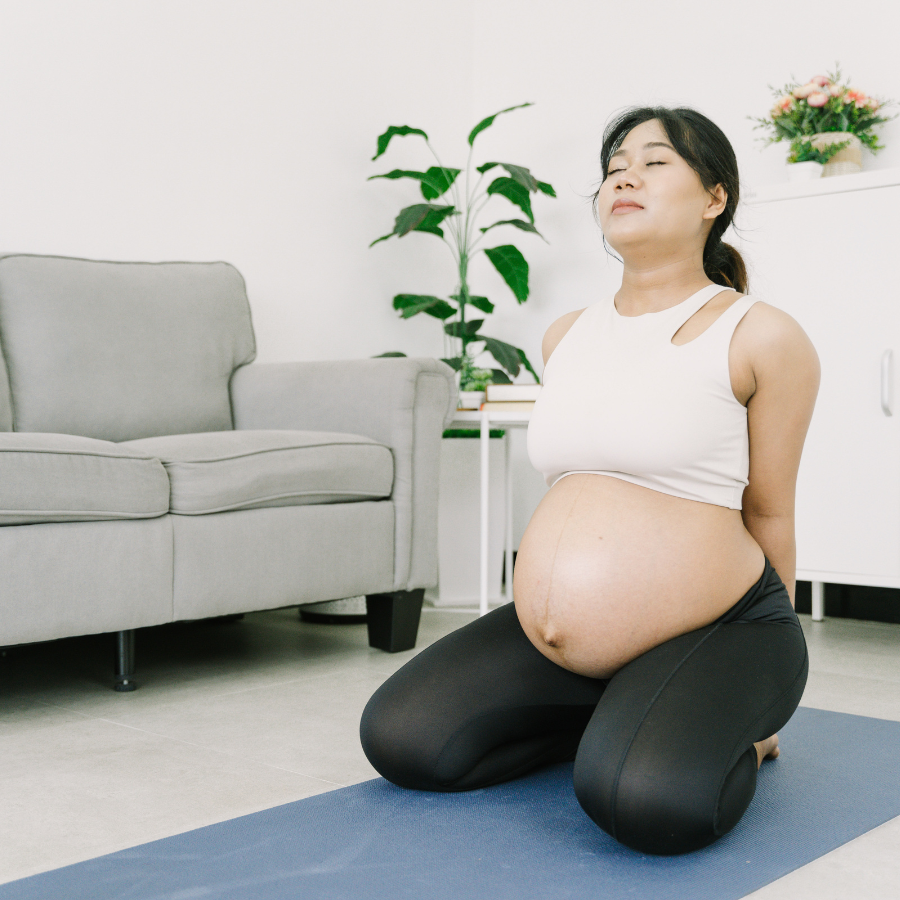
Labor can be an intense experience, and managing pain during this time is a top priority for many expecting moms.
One of the most effective ways to handle the discomfort is through proper breathing and relaxation techniques. When practiced regularly, these techniques can help calm your mind, reduce stress, and give you a sense of control during labor.
The Role of Breathing and Relaxation in Labor
Breathing and relaxation are crucial tools for labor because they help lower stress, manage pain, and provide mental focus.
When you breathe deeply and steadily, it calms your nervous system, which can make the pain more manageable.
Many women find that focusing on their breath during contractions allows them to stay grounded and relaxed, even as labor progresses.
Importance of Preparation
Like any skill, breathing and relaxation techniques require practice to become second nature. The best time to prepare is during pregnancy, especially when you are starving, and you can easily fit these practices into your daily routine. Taking a few minutes during work breaks to focus on your breath will help you build confidence and muscle memory, so when labor begins, you’ll be ready.
1. Deep Belly Breathing (Diaphragmatic Breathing)

How It Works:
Deep belly breathing focuses on filling your abdomen with air rather than your chest. This type of breathing helps you stay calm and in control.
Benefits:
It activates your body’s relaxation response, lowering your heart rate and reducing stress. This is especially helpful during early labor or in between contractions.
Steps for Practice:
- Sit comfortably with your hands on your belly.
- Inhale deeply through your nose, feeling your belly rise.
- Exhale slowly through your mouth, letting your belly fall.
2. Counted Breathing
How It Works:
This technique involves regulating your breath by counting as you inhale and exhale. For example, you might inhale for 4 seconds and exhale for 6 seconds.
Benefits:
It helps you maintain focus and steady breathing during contractions, keeping you grounded.
Steps for Practice:
- Inhale deeply through your nose for a count of 4.
- Hold your breath for a moment.
- Exhale slowly through your mouth for a count of 6.
3. Ujjayi Breathing (Ocean Breathing)
How It Works:
With Ujjayi breathing, you breathe through your nose while slightly constricting the back of your throat, which creates a gentle “ocean” sound.
Benefits:
This breathing technique enhances mental clarity and focus, while the rhythmic sound can help you stay calm during contractions.
Steps for Practice:
- Inhale deeply through your nose, slightly constricting the back of your throat.
- Exhale slowly, creating a soft sound as you breathe out.
4. Progressive Muscle Relaxation

How It Works:
In progressive muscle relaxation, you tense and then release different muscle groups, helping you let go of physical tension.
Benefits:
This technique is useful for relieving tension that can build up during labor. It helps you stay physically relaxed and more comfortable.
Steps for Practice:
- Start at your feet, tensing the muscles for a few seconds, then release as you exhale.
- Gradually move up your body, focusing on each muscle group from your legs to your neck and shoulders.
5. Visualization and Guided Imagery
How It Works:
In this technique, you use your imagination to create a calming mental image, like a peaceful beach or a serene forest.
Benefits:
Visualization provides a mental escape from the discomfort of labor, helping reduce anxiety.
Steps for Practice:
- Close your eyes and breathe deeply.
- Picture a peaceful place in your mind, focusing on the sights, sounds, and feelings of being in that calming environment.
6. 4-7-8 Breathing
How It Works:
This breathing pattern involves inhaling for 4 seconds, holding your breath for 7 seconds, and exhaling for 8 seconds.
Benefits:
4-7-8 breathing helps slow your heart rate and promotes relaxation, making it great for reducing anxiety and tension.
Steps for Practice:
- Inhale through your nose for 4 seconds.
- Hold your breath for 7 seconds.
- Exhale slowly through your mouth for 8 seconds.
7. Pelvic Rocking with Breath

How It Works:
This technique combines gentle pelvic rocking movements with deep, rhythmic breathing to help ease discomfort in your lower back.
Benefits:
Pelvic rocking helps relieve tension in your lower back and hips while also encouraging flexibility, making it easier to manage labor pain.
Steps for Practice:
- Sit or stand comfortably.
- As you inhale, rock your pelvis forward.
- As you exhale, rock your pelvis back. Repeat with each breath, staying in a steady rhythm.
Conclusion: The Importance of Regular Practice
Practicing these breathing and relaxation techniques during work breaks or downtime can help you become more familiar with them. When labor begins, you’ll be able to use the techniques instinctively, helping you stay calm and manage pain more effectively.
During labor, you can try combining different techniques to find what works best for you. For example, you might use deep belly breathing between contractions and switch to counted breathing or visualization during contractions. Flexibility is key; adjust your approach as labor progresses.


